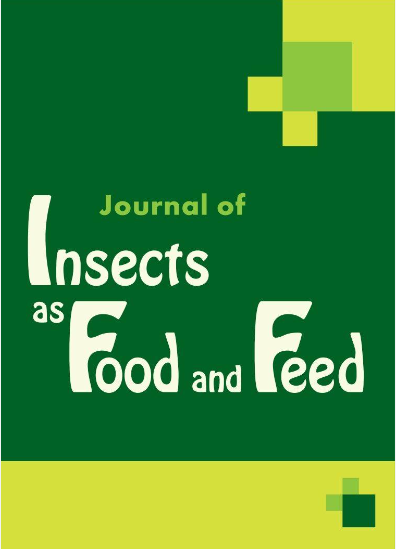猫主人对使用昆虫作为猫饲料配料的看法
IF 3.5
3区 农林科学
Q1 ENTOMOLOGY
引用次数: 0
摘要
目前,昆虫是宠物食品中动物性成分的一种可持续替代品,但有关猫主人是否愿意在宠物饮食中添加昆虫的信息却很少。本研究旨在评估猫主人对饲喂昆虫饲料的看法。在 2021 年 6 月至 8 月期间,我们向智利的猫主人提供了一份在线调查;在所有参与者(1684 人)中,大多数为女性(89.2%),受过大学教育(73%),有杂食习惯(63.7%)。参与者平均每户养 2 只猫(70.2%),均为室内生活方式。大多数参与者(63.6%)愿意给猫咪喂食昆虫。与纯昆虫粉(OW = 4.9 ± 3.3)或整只昆虫(OW = 4.4 ± 3.3)相比,参与者更愿意给猫咪喂食含有 20% 昆虫粉的食物(总体意愿 (OW) = 7.1 ± 3.1,1 至 10 分)。对蟋蟀粉的接受度最高。当提及昆虫生产对环境的益处时,人们对昆虫的接受度增加(OW = 7.6 ± 2.9)。更愿意为猫咪提供昆虫类食物的参与者也更愿意使用纯昆虫粉甚至整只昆虫。不愿意在猫饲料中添加昆虫的原因是厌恶、不熟悉和偏爱传统宠物食品。本文章由计算机程序翻译,如有差异,请以英文原文为准。
Perception of cat owners on the use of insects as feed ingredients for cats
Currently, insects represent a sustainable alternative to animal-based ingredients for pet food, but there is little information on the willingness of cat owners to incorporate insects into their pet diets. The objective of this study was to assess the perception of cat owners to feed insect-based feed. Between June and August 2021, an on-line survey was provided to cat owners in Chile; of the total number of participants (1684), the majority were female (89.2%), with university education (73%) and omnivorous eating habits (63.7%). Participants had an average of 2 cats per household with indoor lifestyle (70.2%). Most participants (63.6%) were willing to feed insects to their cats. Participants were more willing to feed their cats treats containing 20% insect meal (Overall willingness (OW) = 7.1 ± 3.1, on a scale of 1 to 10), than pure insect meal (OW = 4.9 ± 3.3) or whole insects (OW = 4.4 ± 3.3). Cricket meal treats were the most acceptable. Acceptance toward insects increased when mentioning the environmental benefits of insect production (OW = 7.6 ± 2.9). Participants more willing to offer insect-based treats to their cats were also more willing to use pure insect meal and even whole insects. The reasons for not wanting to include insects in cat feed were disgust, unfamiliarity and preference for traditional pet foods.
求助全文
通过发布文献求助,成功后即可免费获取论文全文。
去求助
来源期刊

Journal of Insects as Food and Feed
Agricultural and Biological Sciences-Insect Science
CiteScore
7.00
自引率
17.60%
发文量
133
期刊介绍:
The Journal of Insects as Food and Feed covers edible insects from harvesting in the wild through to industrial scale production. It publishes contributions to understanding the ecology and biology of edible insects and the factors that determine their abundance, the importance of food insects in people’s livelihoods, the value of ethno-entomological knowledge, and the role of technology transfer to assist people to utilise traditional knowledge to improve the value of insect foods in their lives. The journal aims to cover the whole chain of insect collecting or rearing to marketing edible insect products, including the development of sustainable technology, such as automation processes at affordable costs, detection, identification and mitigating of microbial contaminants, development of protocols for quality control, processing methodologies and how they affect digestibility and nutritional composition of insects, and the potential of insects to transform low value organic wastes into high protein products. At the end of the edible insect food or feed chain, marketing issues, consumer acceptance, regulation and legislation pose new research challenges. Food safety and legislation are intimately related. Consumer attitude is strongly dependent on the perceived safety. Microbial safety, toxicity due to chemical contaminants, and allergies are important issues in safety of insects as food and feed. Innovative contributions that address the multitude of aspects relevant for the utilisation of insects in increasing food and feed quality, safety and security are welcomed.
 求助内容:
求助内容: 应助结果提醒方式:
应助结果提醒方式:


